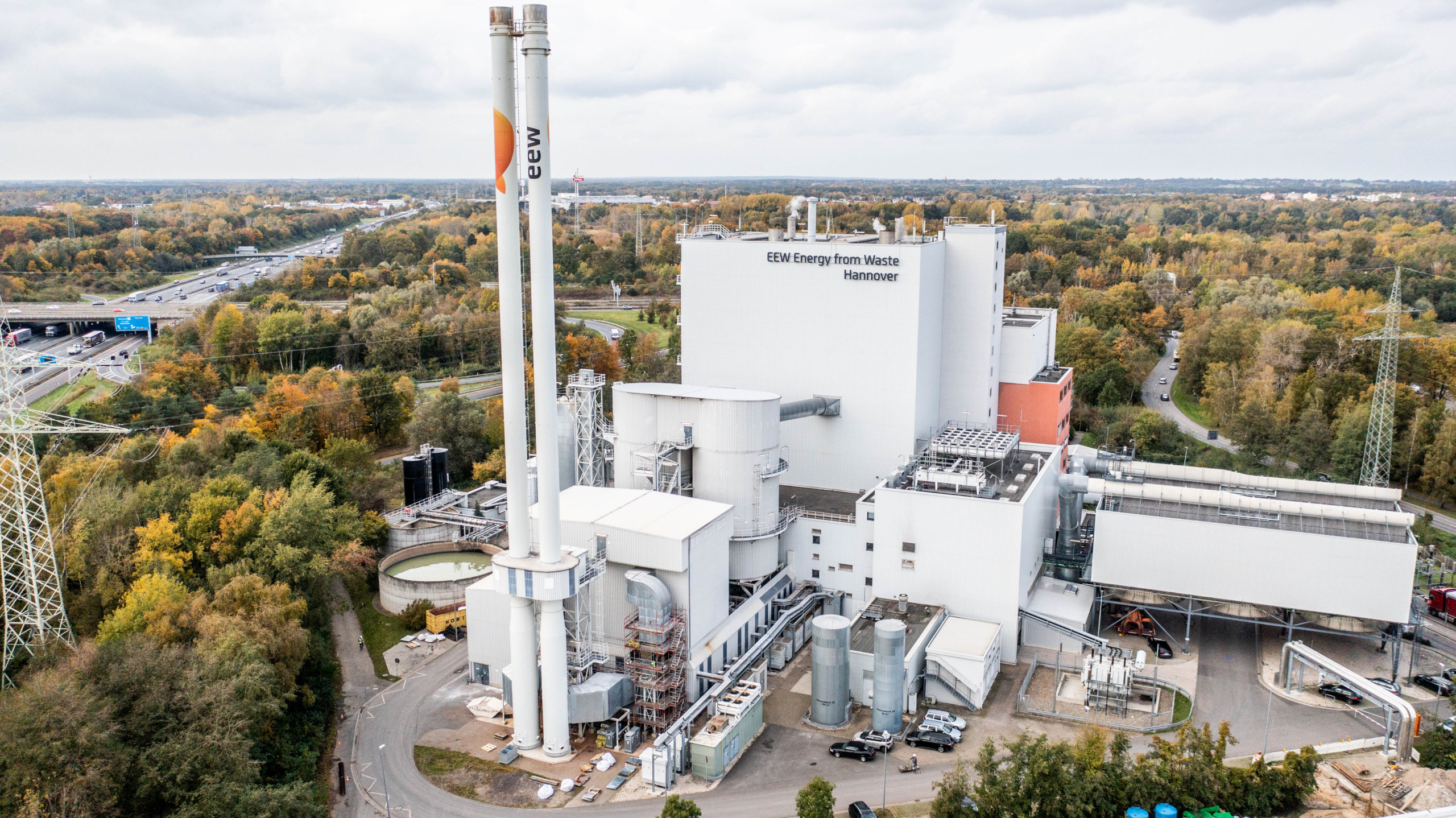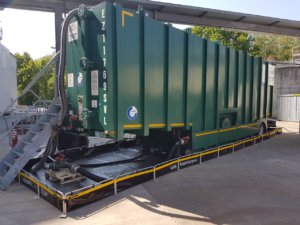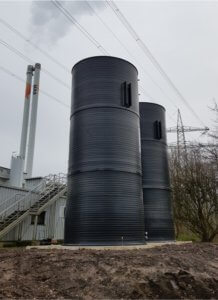Events
Future events

In 2017, EEW Energy from Waste opened up another business field alongside the classic energy recovery of municipal waste with the thermal utilisation of sewage sludge.

70 m3 tank for waste water injection
Sewage sludge is the waste from wastewater treatment. It contains everything that modern sewage treatment plants filter out of wastewater. According to the law, such sewage sludge may no longer be used to fertilise arable land. Instead, all pollutants in sewage sludge are to be destroyed by thermal sewage sludge utilisation. However, sewage sludge consists of about 75 % water and is more of a fire extinguishing agent than a fuel. However, if it is dried to slightly more than 40 % dry matter content, it burns by itself in the Fluidised-bed oven. What remains is a phosphate-containing ash and condensation water – so-called exhaust vapour. Until now, this had to be disposed. At the same time, it contains high levels of nitrogen and, in particular, ammonium compounds, which are essential for the denitrification process in flue gas cleaning (SNCR process).

Vapour recovery tank
So what could be more obvious than to try whether such wastewater can replace industrially produced ammonia water? Long-term experiments have shown that nitrogen-containing wastewater from the treatment of domestic waste or sewage sludge can replace the use of ammonia water in flue gas cleaning. The substitution of ammonia water in flue gas purification is already being practised successfully at the Hanover site and a patent application has been filed for the process.
Other nominees for the 2nd CEWEP Technological Innovation Award:
Hafslund Oslo Celsio, Norway – Carbon Capture and Storage project
Krakow, Poland – a centralised plant control and management system
The Award winners will be decided by popular vote during 10th CEWEP Congress in Berlin on 15th June 2023.